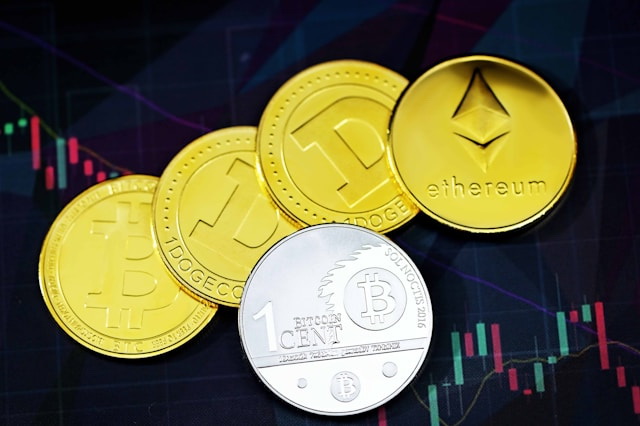After a 6% drop in the S&P 500 in April, it took only 33 days for the index to set a new all-time high. Despite fears of stagflation, iCapital’s experts say there are more positives than negatives in this environment and estimate three reasons why we should increase equity exposure, especially if it is underweight relative to strategic allocations.
Reason 1: April’s inflation report should support market spirits
Despite the sticky inflation prints to start the year, iCapital believes April’s inflation reading should support market spirits as it confirms that, with a 3.6% year-over-year (YoY) core CPI and 2.8% YoY core PCE, we are squarely in the “last mile” of fighting inflation. While recent readings may warrant a Fed on hold, they certainly do not warrant a hike – as Chair Powell has stated in recent speeches. With goods disinflation, the two remaining drivers of inflation are shelter (5.5% YoY) and car insurance (+22% YoY). However, the direction of shelter inflation is still lower, as it continues to ease on a month-over-month (MoM) and YoY basis.
The Federal Reserve must also acknowledge that interest rates may influence the demand side of rate-sensitive sectors of the economy, but they do not control the supply. The reason why the last mile of inflation is sticky is that while the Fed’s policies helped reduce demand for housing (new/existing home sales) and demand for labor (JOLTS job openings), they cannot affect the supply side of the equation, which is limited by the number of housing units and the availability of labor. It will take time for the supply side to catch up, as new multi-family units come online and additional workers enter the labor force (most likely through migration).
While recent trends have been firmer than we, and the Fed, would have liked, inflation is now in the 2-3% range. This is a notable improvement from a year ago, when we were still in the 4-5% range. To us, this is a lack of “flation” in the stagflation narrative and, in fact, 2-3% inflation can help sustain pricing power of corporates and, therefore, earnings.
Reason 2: The fears of stagflation in our view seem overblown
With inflation in its last mile, growth has remained strong. Despite the weak headline GDP print, underneath the surface growth was quite strong. Indeed, private domestic final purchases, which capture services consumption and residential construction, rose a solid +3.1%, which is much stronger than the +1.6% headline GDP and in line with the last two quarters of consumption. This trend appears to have continued in the second quarter as the Atlanta Fed GDPNow remains around 4%.
Analysts also believe this level of activity should be supported by a resilient consumer. Even despite some of the weakness in retail sales, which looks primarily at goods spending, real-time spending data remains healthy and is running above 2022 and 2023 levels. Consumption should be further supported by healthy labor markets and real wage growth returning to positive territory for all income cohorts, a welcomed departure from the last two years.
Reason 3: Growth is also picking up globally
The strength of economic activity has not been limited to the U.S.; there has also been an improvement in global economic growth. Global GDP growth, as proxied by the Bloomberg Global Growth tracker, is running at a +4.3% annualized rate for the month of April. This is a stark improvement from the tracker’s +0.8% annualized rate in Oct 2023. In addition, iCapital have also seen economists revise their global growth forecast higher throughout the year. Indeed, forecasts for global growth have been revised higher by 30 bps to 2.90% for 2024.
Investment Implications: Returns worth staying for
After the swift recovery to all-time highs on the S&P 500, we see a path towards 5,500-5,600, especially as earnings continue to inflect higher and broaden throughout the year. With 80% of companies reporting earnings so far this quarter, earnings are coming in better than expected. Indeed, 77% of the companies are beating estimates with an earnings surprise of +7.5%, which is above the 10-year average. And with sticky prices, this should support nominal revenue growth.
Even as the Fed maintains rates at a “higher-for-longer” level, markets still perform well during periods of Fed pauses. Indeed, markets return an average of 9.2% during pause periods. And as long as growth remains strong, we see no reason why the current pause should be different.
Public Markets: Maintaining our cyclical bias
Within public markets, the experts continue to like the cyclical sectors: consumer discretionary, industrials, financials, and semiconductors. While the macro environment discussed above is broadly supportive of these sectors, strong earnings growth has also supported their performance so far this year. Indeed, consumer discretionary, information technology and industrials have all reported YoY earnings growth that has been better than the S&P 500. “We believe this trend should continue, as consumer discretionary, industrials and financials have some of the best earnings revisions ratios over the last three months”, the report said.
Private markets: Favorable growth and income opportunities
Looking at the opportunity set in private markets, iCapital continues to favor private equity, private credit and real estate debt asset classes.
In private equity, valuations are rebounding with public markets, but remain below public market valuations. The analysts continue to believe private equity is a way to access themes such as AI, as managers (GPs) are working to infuse AI improvements to drive value creation in their buyout businesses. With lack of IPO volumes, companies are once again staying private for longer. But, exit activity should continue to improve throughout the remainder of the year.
In private credit, floating rate coupons should remain higher with rates on hold for longer (10-12% income yields). This provides a nice pick-up in yields relative to leveraged loans and high yield. Over time, private credit has provided consistent returns through consistent income, low volatility, and prudent underwriting.
Finally, real estate debt, banks are definitely pulling back from CRE lending amidst the large wall of upcoming maturities. But CRE debt funds do have $77 billion in dry powder to help alleviate the funding gap. Investors can earn ~ 9% yields in CRE debt and benefit from a higher place in the capital structure and equity cushions.



